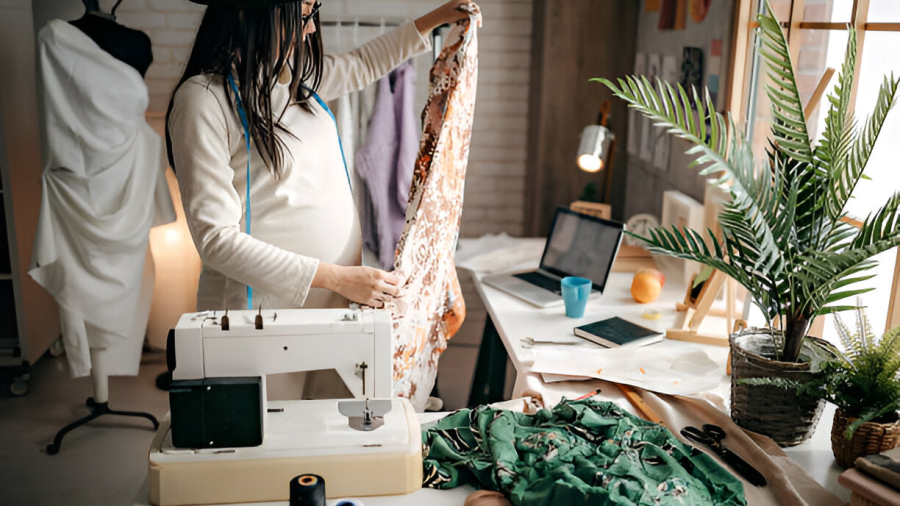Fashion is no longer only about looking beautiful; it is also about doing good. With the rise of eco-friendly fashion, the industry is experiencing a stylish and sustainable transformation. Let’s look at how these behaviors are altering our perceptions of fashion, and maybe even have a good laugh along the way.
The Problem of Fast Fashion
For years, fast fashion has been the standard, selling low-cost, stylish clothing that soon goes out of favor. However, this method has a significant environmental cost. “It’s like eating fast food every day—you get your fill, but it’s not exactly healthy.”
Rapid fashion production can involve bad labor practices, high water use, and huge waste.
Enter eco-friendly fashion.
Eco-friendly apparel is here to save the day—or, at least, our closets and the planet. This movement advocates for sustainable approaches that lessen the environmental impact of apparel production. “Think of it as a wardrobe detox for the planet.”
Organic ingredients, fabric recycling, and fair employment practices are all examples of sustainable fashion methods. These efforts not only benefit the environment, but also encourage a more ethical fashion business.
Organic and recycled materials.
Using natural and recycled materials is an important aspect of eco-friendly fashion. Organic cotton, hemp, and wood are popular choices since they use less water and chemicals. “Are you wearing Bamboo? Sounds insane, but it’s gentler than you think!”
Recycled fabrics are also making a splash. Brands are transforming throwaway bottles, outdated clothes, and even fishing nets into fashionable new items. It’s like giving rubbish a stylish second life.
Slow Fashion Movement
Slow fashion is the antidote for quick fashion. It prioritizes quality over quantity, encouraging customers to invest in classic, long-lasting products. “Buy less, choose well, make it last—that’s the slow fashion mantra.”
This trend encourages mindful consumption, in which we consider our purchases and their long-term value. It’s about loving and wearing what you like season after season.
Ethical Labour Practices
Sustainable fashion is about more than simply the environment; it also involves people. Many environmentally friendly companies stress fair compensation and safe working conditions for their employees. “After all, a shirt that costs less than your morning coffee probably isn’t paying someone fairly.”
Consumers may help make the industry more just and equal by choosing companies that appreciate their workers.
Renewable fashion innovations
The fashion business is growing more creative about sustainability. Innovation is driving the development of recyclable fabrics and 3D-printed apparel. “Imagine wearing a dress made from mushroom leather—now that’s fungi fashion!”
These technologies not only minimize waste, but also provide new opportunities for sustainable fashion.
Making Eco-Friendly Clothing Accessible
One of the difficulties with sustainable fashion is its expense. Sustainable clothing can be more expensive than fast-fashion clothing due to environmentally friendly materials and ethical labour practices. The industry is attempting to make these solutions more accessible. “Because saving the planet shouldn’t break the bank.”
Brands are looking for ways to produce sustainable fashion at a lesser cost, while second-hand purchasing is becoming increasingly popular. Thrift stores and online resale platforms provide environmentally sustainable and cost-effective options.
How Can You Help?
You don’t have to be a fashion billionaire to have an impact. Here are a few easy ways to support eco-friendly fashion:
- Buy Less: Emphasize quality over quantity.
- Choose Green Brands: Support businesses that embrace environmentally friendly methods.
- Recycle and upcycle your old clothes to give them new life.
- Shop Secondhand: Thrift stores offer unique, green items.
“Remember, even modest steps count. Even if you only replace one fast fashion item with a sustainable one, you’re having a beneficial impact.
Final Thoughts
Eco-friendly fashion is transforming the business, demonstrating that class and ecological responsibility can coexist. We can all help to make the world a more sustainable place by using organic and recycled materials, supporting ethical labor practices, and adopting slow fashion.
So, next time you’re shopping for clothes, think about the impact of your choices. Together, we can make the fashion industry a force for good.


